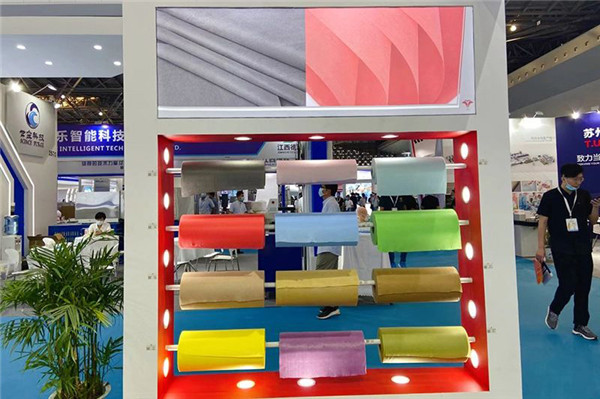-
Leading Spunlace Fabric Manufacturers: Find High-Quality Suppliers
In the vast landscape of textile manufacturing, spunlace fabric stands out for its versatility, softness, and durability. Whether you’re sourcing materials for medical supplies, hygiene products, home textiles, or industrial applications, finding a reliable spunlace fabric manufacturer is c...Read more -
SPUNLACE NONWOVEN FOR MEDICAL ADHESIVE TAPE
Spunlace for medical adhesive tape refers to the use of spunlace non-woven material in the production of medical adhesive tapes. Spunlace non-woven material is characterized by its softness, breathability, and strength, making it suitable for medical applications. Medical adhesive tapes made from...Read more -
WATER REPELLENCY SPUNLACE NONWOVEN
Water repellency spunlace nonwoven refers to spunlace nonwoven material that has been treated to repel water. This treatment typically involves applying a water-repellent finish to the surface of the nonwoven fabric. Spunlace nonwoven material itself is made from a web of fibers that are entangle...Read more -
Ensuring High Quality in Nonwoven Fabric
In the world of textiles, nonwoven fabrics have become increasingly popular due to their versatility and wide range of applications. Among these, spunlace nonwoven fabric stands out for its unique properties and high quality. Ensuring the quality of spunlace nonwoven fabric is crucial for manufac...Read more -
YDL Nonwovens Wish You a Merry Christmas
As the holiday season approaches, we at YDL Nonwovens want to extend our warmest wishes to you and your loved ones. May this Christmas bring you joy, peace, and wonderful moments with family and friends. We are grateful for your support and partnership throughout the year. As we celebrate this fe...Read more -
Home Textiles Made from Nonwoven Fabric: A Comfortable and Sustainable Choice
Nonwoven fabrics have revolutionized the textile industry, offering a unique blend of strength, durability, and versatility. In recent years, these fabrics have found their way into our homes, transforming the way we think about home textiles. Let’s dive into the world of nonwoven fabrics and exp...Read more -
Spunlace for protective clothing
Spunlace nonwoven fabric is also widely used in the production of protective clothing due to its beneficial properties. Here are some key points regarding the use of spunlace nonwoven fabric for protective clothing: Characteristics of Spunlace Nonwoven Fabric for Protective Clothing: Softness and...Read more -
Spunlace for eye patch
Spunlace nonwoven fabric is also an excellent choice for eye patches due to its unique properties. Here are some key points regarding the use of spunlace nonwoven fabric for eye patches: Characteristics of Spunlace Nonwoven Fabric for Eye Patches: Softness and Comfort: Spunlace nonwoven fabrics a...Read more -
Printed spunlace for mask
Printed spunlace nonwoven fabric is increasingly being used in the production of face masks, particularly in the context of personal protective equipment (PPE) and fashion masks. Here are some key points regarding printed spunlace nonwoven fabric for masks: Characteristics of Printed Spunlace Non...Read more -
SPUNLACE NONWOVEN FOR WOUNDING DRESS
Spunlace nonwoven fabric is a popular choice for wound dressings due to its unique properties and benefits. Here are some key points about spunlace nonwoven fabric in the context of wound care: Characteristics of Spunlace Nonwoven Fabric: Softness and Comfort: Spunlace nonwoven fabrics are soft t...Read more -
Understanding the Laminated Spunlace Nonwoven Fabric Production Process
In the textile industry, nonwoven fabrics have gained significant popularity due to their versatility and wide range of applications. Among these, laminated spunlace nonwoven fabrics stand out for their unique properties and benefits. This article will provide an in-depth look at the production p...Read more -

Yongdeli attends Shanghai Non-woven Fabric Exhibition
A few days ago, Shanghai Nonwovens Exhibition was held in Shanghai World Expo Exhibition Hall. As an exhibitor, Changshu Yongdeli Spunlaced Nonwovens Co., Ltd. showed a new type of functional spunlaced nonwovens. As a professional and i...Read more

